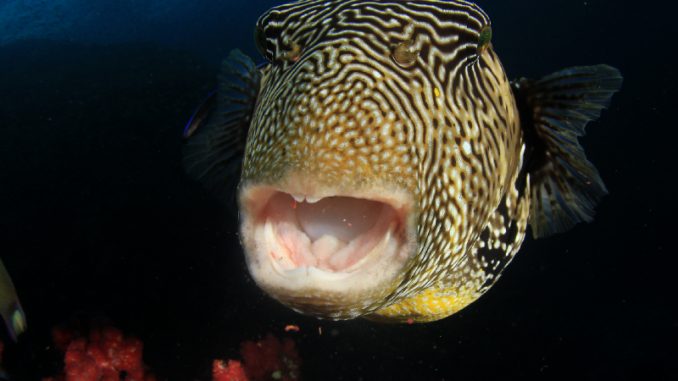
Not everybody wants a community aquarium. Some people prefer a smaller tank containing just one fish that they can form a particular connection to.
Red Eye Puffers fill this niche. They cannot be kept with other fish due to their high levels of aggression, so they get a whole tank to themselves.
They need a very clean environment, so you will need to be confident about maintaining your aquarium.
This care guide discusses all the information you might need when caring for Red Eye Puffers, including their aggression, their ideal habitat, and their feeding needs.
TABLE OF CONTENTS
Red Eye Puffer Facts & Overview
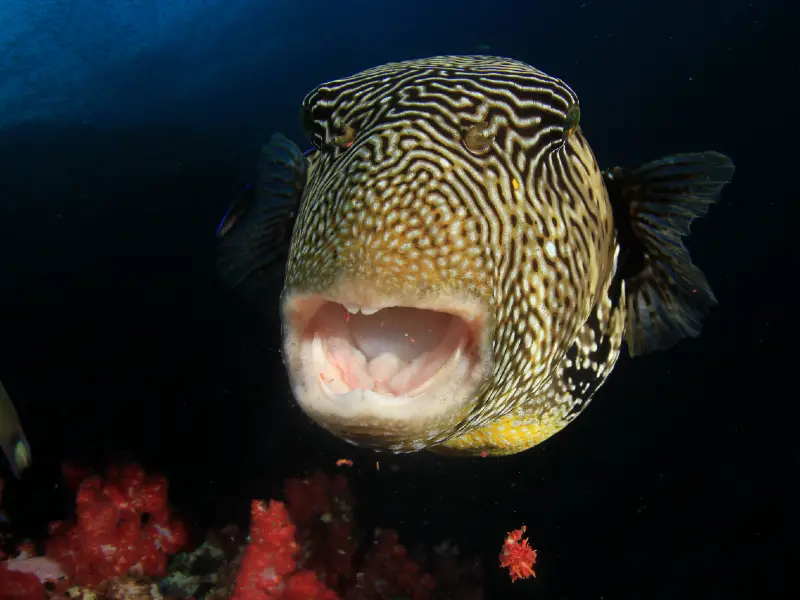
| Category | Rating |
| Care Level: | Intermediate |
| Temperament: | Aggressive |
| Color Form: | Brown with red eyes |
| Lifespan: | Up to 5 years |
| Size: | 2-3 inches |
| Diet: | Carnivore |
| Family: | Tetraodontidae |
| Minimum Tank Size: | 10 gallons |
| Tank Set-Up: | Freshwater; heavily planted |
| Compatibility: | Keep singly |
The Red Eye Puffer is a freshwater species in the Tetraodontidae family. Its scientific name is Carinotetraodon lorteti, but it has a few alternative common names too, such as Somphong’s Puffer and the Crested Puffer.
It is native to Southeast Asia, living in rivers around Thailand, Cambodia, and Vietnam, among others.
In an aquarium, this species can be sensitive to changes in its environment, so frequent cleaning is required.
Maintaining a consistent internal environment isn’t always easy, and performing extra partial water changes will take up more of your time. Beginners might be more comfortable picking a different species.
If cared for properly they could live for around 5 years.
There may not be a stock of Red Eye Puffers near to you. Check the health of any fish you intend to buy, looking for signs of disease or injury.
Typical Behavior
These fish are nocturnal. They hide away during the day and come out at night. They will use your lighting schedule to regulate this.
Red Eye Puffers swim in all areas of the tank, but often stay close to surfaces.
They live a solitary lifestyle because of their aggression. They will fight with other fish, including other Red Eye Puffers. They should be the only fish in the tank.
Having a tank focused solely around one fish helps you show off their personality. You’ll quickly become very attached.
Appearance
The appearance of Red Eye Puffers is very distinctive. They have a similar body shape to a ‘classic’ puffer, but they are covered in an interesting pattern.
Dark lines extend all over the body in an unstructured, maze-like fashion. Only the belly remains clear. Sometimes these lines are gold.
There is a red ring surrounding the black of their eye, which is where their name comes from. This is the brightest bit of color they have, so their eyes really stand out.
An adult Red Eye Puffer is only 2-3 inches long. They’re ideal if you only have a small tank.
Sexing isn’t too difficult. Females often have a finer, more intricate design, but the key giveaway is that males have a red dorsal fin and a red stripe running along the belly, though this only appears when spawning.
Males tend to be larger too.
Habitat and Tank Conditions
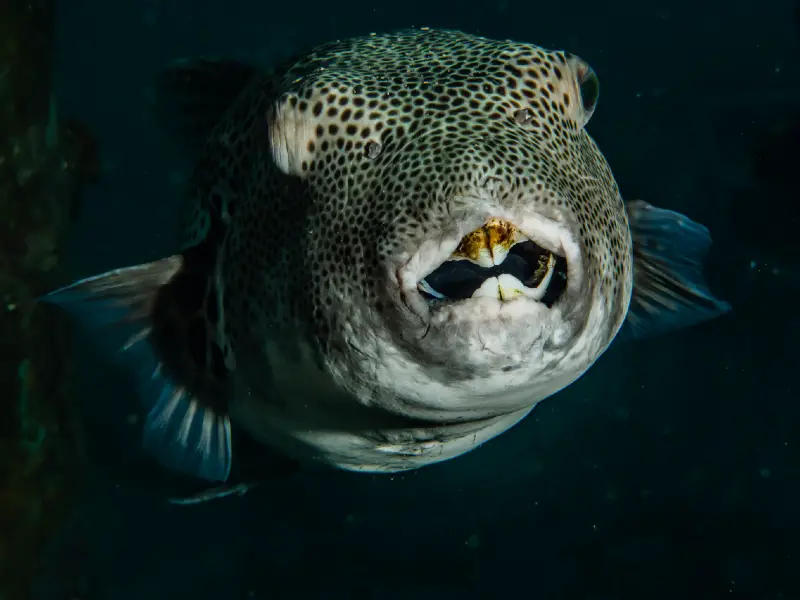
Red Eye Puffers originate in Southeast Asia in countries such as Thailand, Cambodia, and Vietnam. Here they inhabit bodies of freshwater such as slow-moving rivers and ponds.
These areas are usually dense in vegetation, which offers shelter and block out bright sunlight from above. The water would be warm and acidic.
They are quite rare and difficult to find in the wild.
Maintaining the perfect environmental conditions is particularly key with this species. Below we describe how you can recreate their natural habitat to keep them healthy.
Tank Conditions
A soft, sandy substrate at the base of the aquarium is best because it’s least likely to scratch. Red Eye Puffers spend lots of time around the substrate.
You can add some decorations to create hiding spaces, but the most important additions are live plants. Pick various species to fill different areas of the tank.
Red Eye Puffers can easily become bored; plants help with this. They also help when the fish become spooked (which happens a lot), offering refuge.
The only necessary equipment is a heater and a filter. An effective filtration system is important because this species is a messy eater.
Set the heater between 75°F and 82°F. The pH of the water should be 6.5-7.0.
What Size Aquarium do they need?
Reaching just 2-3 inches, this species can comfortably be kept in a 10-gallon aquarium. They will enjoy being in larger tanks though, as they will be less likely to get bored.
How Many Can be kept per gallon?
There should only be one Red Eye Puffer per aquarium, due to aggression.
Tank Mates
There isn’t too much to say about tank mates.
A Red Eye Puffer should always be kept singly as the only fish of any species in the aquarium. They will fight with their own kind as well as others. Any fish you add will cause fights, resulting in injury and death.
Aggression is highest between two male Red Eye Puffers.
Some people try to add invertebrates. This could be successful, but there is no guarantee that your shrimps and snails won’t be eaten.
Plants are the only living things that can live alongside a Red Eye Puffer.
Diet
Red Eye Puffers are carnivorous fish that like a diet full of meaty foods.
Live/frozen foods are the best for this in captivity. You could use things like bloodworms, daphnia, and mosquito larvae.
Aquatic snails can be given to control the size of your fish’s teeth. Biting through shells helps to file them down. If the snails are too big, your puffer will be able to eat it without breaking the shell though.
Adding crustaceans (like dwarf shrimp) to the diet will have a similar effect.
Some people have managed to ‘train’ their fish to accept dried foods (flakes and pellets), but this is unlikely.
Dried foods are not very nutritious either; they are best avoided for Red Eye Puffers.
If possible, try to feed them in small amounts twice a day, in the evening and in the morning. This is closest to their natural feeding habits.
Care
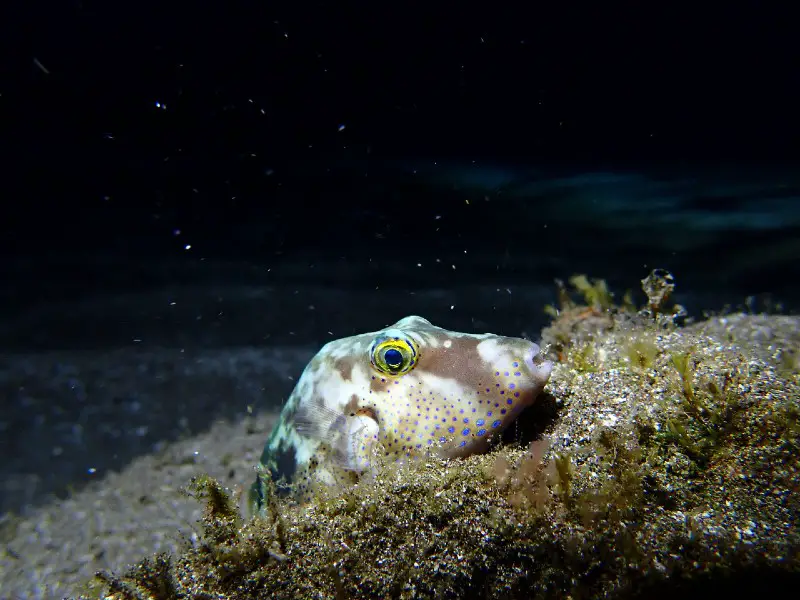
The needs of this species are easy to meet, the only problem can be maintaining them. A Red Eye Puffer is very sensitive to change in their tank.
Maintaining the quality of the water is essential if you want your fish to reach its maximum lifespan.
You must know how to clean your aquarium effectively. You will probably have to perform partial water changes more regularly than you have had to in the past.
Use a water testing kit each week. You want to be sure that the water parameters are remaining constant. You can then respond quickly to changes before they can affect your fish.
Remove uneaten food before it gets a chance to decay and ruin your water quality. Wipe away excess algae as you see it too.
Red Eye Puffers aren’t prone to any particular diseases, but they can catch common ones, like the parasite ich, which presents as white spots on the body.
Don’t add anything to the tank that contains copper because it can make puffers sick. Medications often contain copper.
Breeding
It is possible to breed Red Eye Puffers in captivity, but it is an aggressive act that can be difficult to initiate.
You will need a larger tank, at least 20 gallons, with an abundance of live plants. This will help to reduce the aggression between your mating pair.
The perfect water conditions are crucial. Make sure you are keeping everything clean. A high protein diet will help too.
Some people have found that gradually raising the temperature to 82°F and decreasing the pH to 6.0 helps to trigger spawning.
Courting can be aggressive. The male will chase the female and show off his colors.
Afterward, the female will deposit her eggs on plants (java moss is preferred) around the tank before being chased away by the male so that he can look after them.
Remove both parents once the fry are free swimming, or they will eat them.
Feeding the fry can be difficult. Infusoria and micro-worms have been used successfully in the past.
Are Red Eye Puffers Suitable for Your Aquarium?
You can’t just add Red Eye Puffers to a pre-existing aquarium, you must design the whole tank around their needs.
You probably already have an idea about whether these fish are suitable for you. Beginners may struggle at providing a consistent internal environment, but aquarists with experience should be able to fulfill all their needs.
These may not be the most colorful fish, but Red Eye Puffers have a very interesting design. They display a curious personality that will captivate you too.
It’s easy to grow connected to these fish; there’s some evidence to suggest that this species recognizes and interacts with its owner.
What do you love most about Red Eye Puffers? Let us know in the comments below…

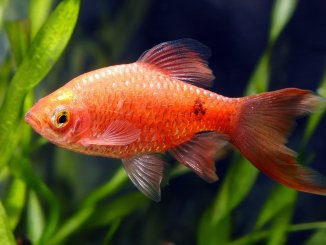
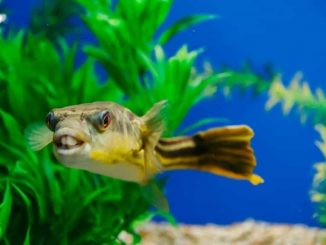
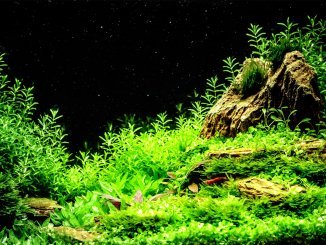
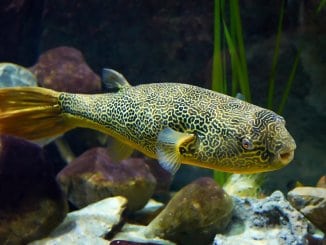
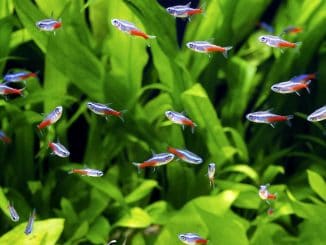
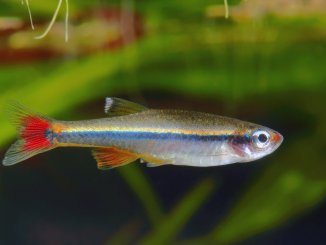
Be the first to comment